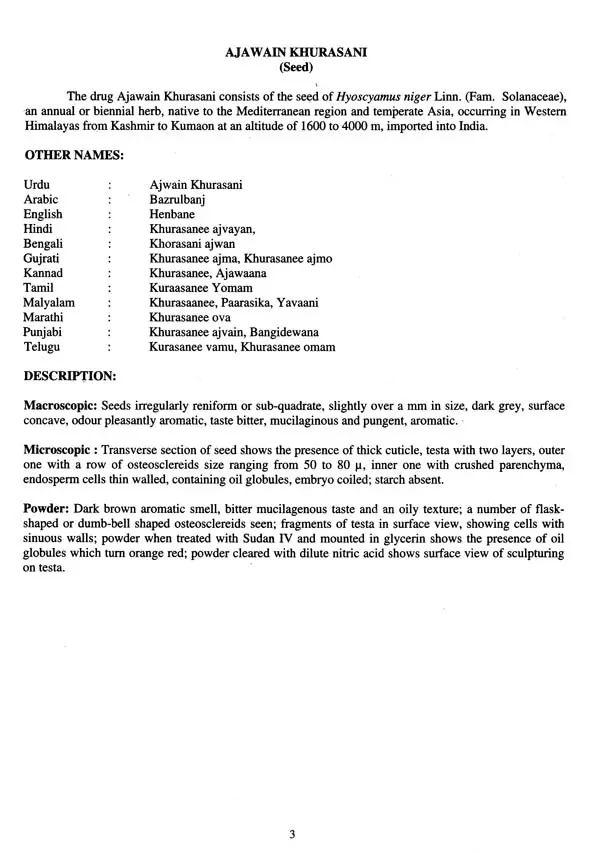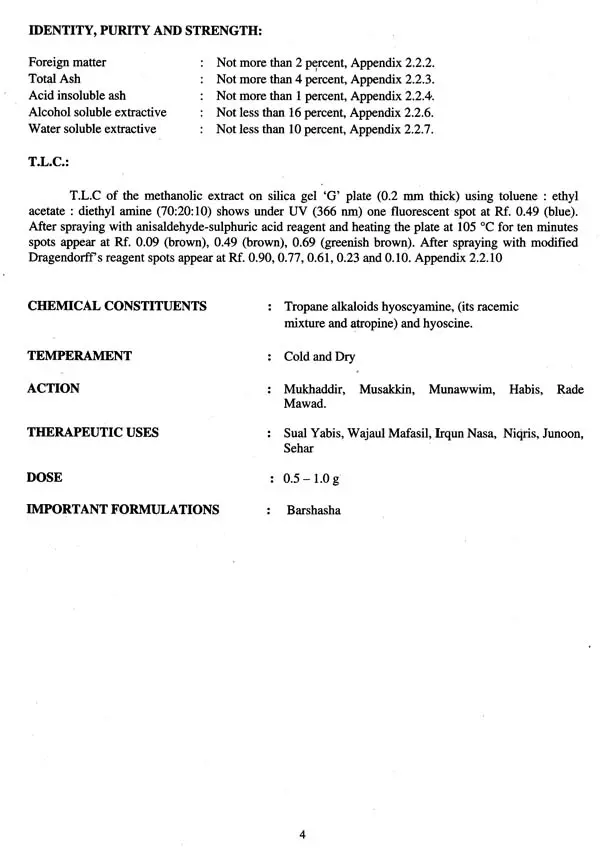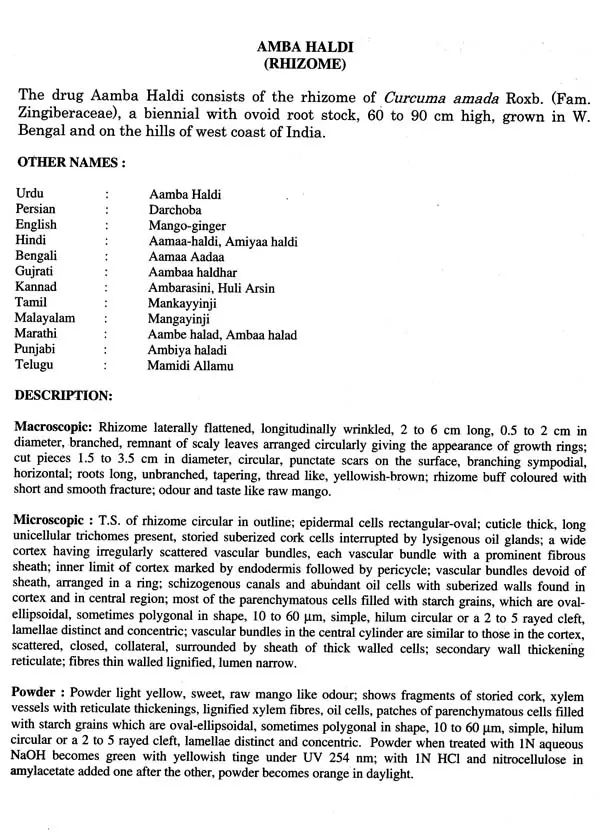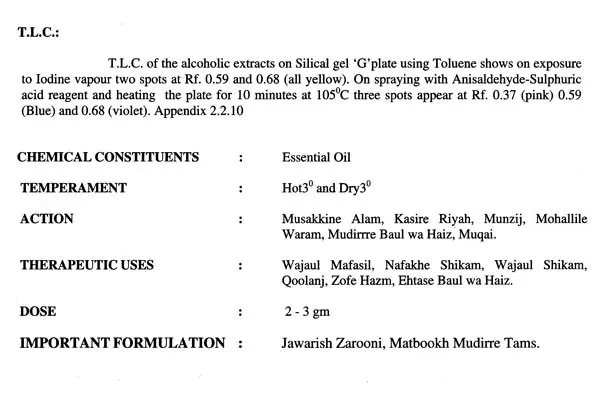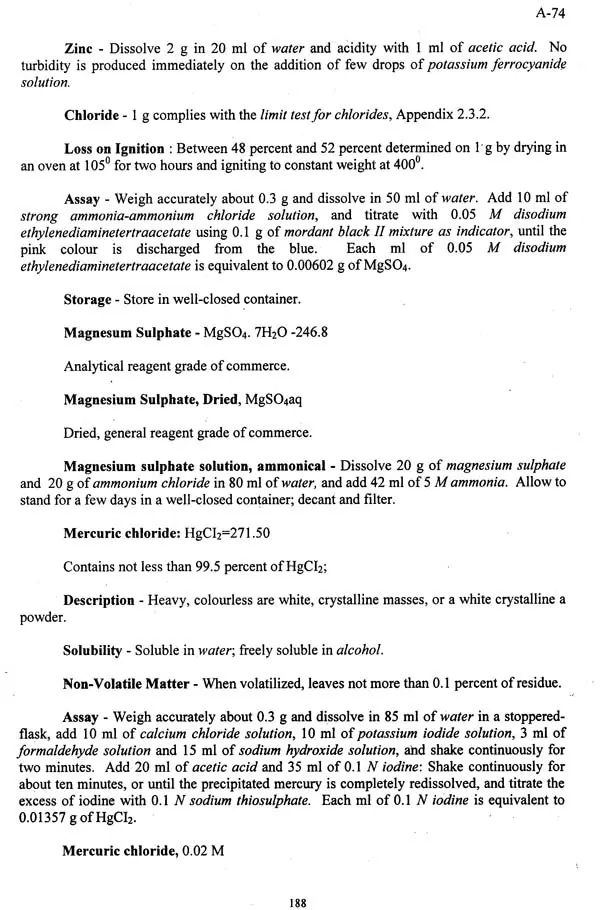
The Unani Pharmacopoeia of India (Part-1, Volume-5)
Book Specification
| Item Code: | UBC385 |
| Publisher: | Government of India, Ministry of Health and Family Welfare, Department of Ayurveda, Yoga & Naturopathy, Unani, Siddha and Homoeopathy, New Delhi |
| Language: | English |
| Edition: | 2008 |
| Pages: | 260 |
| Cover: | HARDCOVER |
| Other Details | 11.50 X 8.50 inch |
| Weight | 1.06 kg |
Book Description
Unani medicine alongwith Ayurveda, Yoga & Naturopathy, Siddha & Homoeopathy is an important part of our national health care delivery system. These systems have been in use for centuries and are time tested & efficacious and provide essential health care to a considerable section of our population. India with the largest network of educational research and health care institutions of Unani is well placed to meet the rising international demand for this System.
The drugs used under Unani are safe, affordable and without major side effects. Majority of the drugs are derived from plants but some are also of animal or mineral origin. There is a need for scientific validation and standardization of these drugs for maintaining their quality and purity.
With this in mind the Unani Pharmacopoeia Committee (UPC) was set up in 1964, to not only lay down the standards for preparation of Unani drugs but also develop tests to establish their identity, purity and quality. The Pharmacopoeial Laboratory for Indian Medicine (PLIM) was established at Ghaziabad (UP) in 1970 to evolve standards for Ayurveda, Unani & Siddha drugs. It is now mandatory to test all formulations for microbial contaminants and heavy metal contents 29 drugs testing laboratories across the country have been identified to work on pharmacopoeial standards of both single and compound Unani, Ayurveda and Siddha drugs.
The Central Council for Research in Unani Medicine (CCRUM) is the Secretariat for the UPC The Council through its different Drug Standardization Research Units has been engaged in generating data with regard to standardization of Unani drugs. So far four volumes of the first part of the Unani Pharmacopoeia of India containing 45, 50, 53 and 50 drugs, respectively, have been published. The present fifth volume contains pharmacopoeial standards for 52 other Unani single drugs. It is hoped that these volumes would benefit the researchers of Unani Medicine and the manufacturers of Unani Drugs and would help the Government to enforce quality control.
I would like to express my appreciation for the scientific staff of Department of AYUSH, PLIM, Ghaziabad, CCRUM and all the experts associated with the Unani Pharmacopoeia Committee for their valuable contribution and help in bringing out these volumes of the Unani of India. Suggestions and advice for further improving the quality of the pharmacopoeial work are welcome from all.
Medicinal plants and the products there of are integral part of traditional systems of health care. Many such products are also used worldwide as home remedies, over the counter preparations and as a source of phytochemicals by the pharmaceutical industry. These drugs account for a substantial proportion of the global market (over US$ 60 billion/year) and increasing attention is therefore, being paid for assurance of their quality, safety and efficacy. The World Health Assembly (1978, 1987, 1989) has stressed upon the need to ensure the quality of medicinal plant products by using modern analytical techniques and by applying suitable standards. Several guidelines have thus been layed by WHO, USFDA. European Commission for Drugs, Indian FDA, ICMR. AYUSH etc. to name a few. Such guidelines therefore, also apply to Unani, Ayurevda and Homoeopathic finished products for maintaining their quality and efficacy.
Unani System of Medicine is a dynamic healthcare system and its practitioners have been innovative in therapeutics and carried out and recorded clinical trials out of the local flora from the countries it has passed through and discovered newer formulations and added to and thus updated classical from time to time. Some of these formulations are used in clinics as polyherbals whereas, some are purely used as Home Remedies. Traditional Unani drugs and formulations like any other system were strictly produced by its practitioner’s almost on daily basis and dispensed among the patients without having to worry about their self-life. With the growing population and far higher demands for such drugs, the production of these formulations, went into the hands of commercial. houses. In this kind of set up the Unani practitioners could no longer process and prepare their own medicines, but started depending on pharmaceutical houses run commercially and on suppliers of the crude drugs to the extent they needed. In the absence of proper pharmacopoeias and monographs there was hardly any governmental control on the manufacturers/pharmaceutical houses to ensure the quality of medicines marketed for Unani system of medicine.
The Government of India has, therefore, brought the manufacture and sale of Unani Drugs under the purview of drugs and cosmetics Act of 1940. In view of multiplicity of combination of different polypharmaceutical formulations, the primary task given and accomplished by the Unani Pharmacopoeia Committee (UPC) has been to select one set of combinations (formulations) for each indication for the purpose of standardization of such products. As a result of such an activity four volumes containing 441, 202, 103 and 166 pages have already been published by Govt. of India. This initiative was taken to ensure that there should be uniformity in the Unani Medicines marketed in so far as their identity, strength and purity was concerned and to assure the quality of the medicine, through proper drug control measures.



